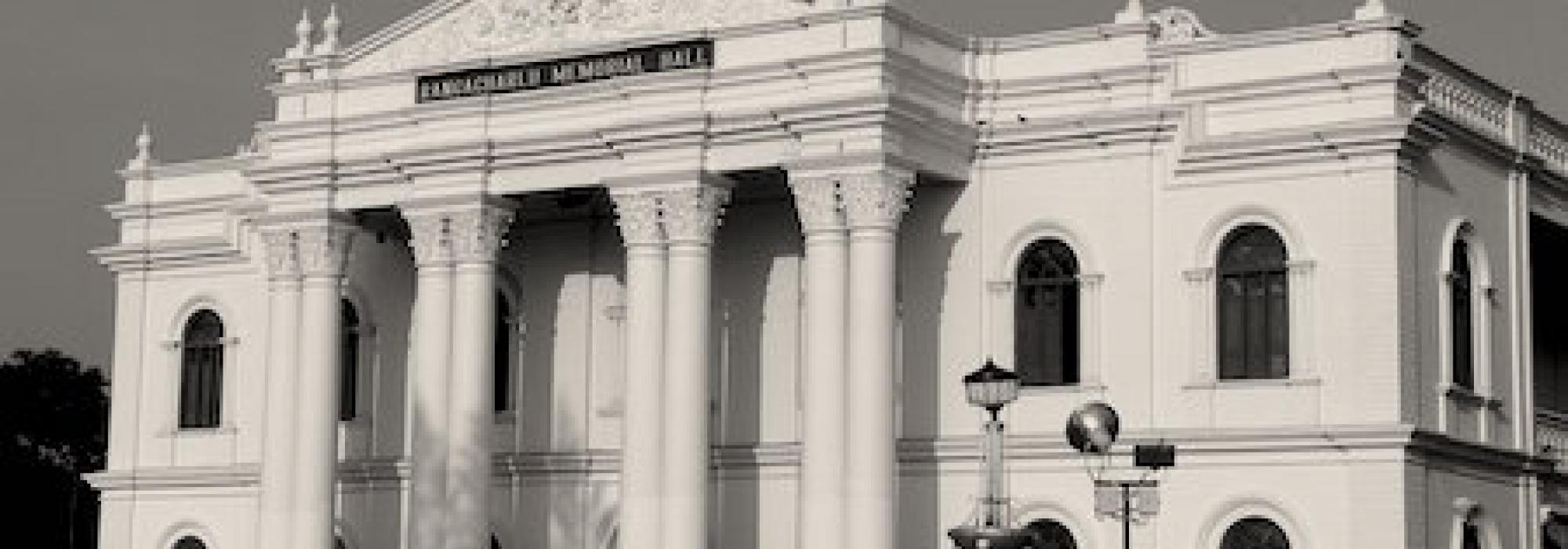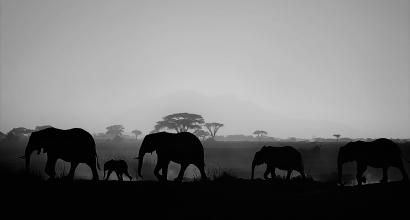According to the Hindu calendar, a span of sixty years is counted as a paryāya. From the start of the Prabhava saṃvatsara till the end of the Akṣaya saṃvatsara is a period of sixty years.[1] We can imagine these to be sixty spokes in the wheel of kāla-puruṣa’s chariot.[2] From one Prabhava to the next Prabhava is one complete rotation of that wheel. Or from Vibhava to Vibhava, Śukla to Śukla, and so on. A cycle of sixty saṃvatsaras is what makes up a ṣaṣṭyābdi. Consider this span of sixty years to be a meaningful segment in a human life-time, our people made it a tradition to celebrate the occasion with the festive ritual of ṣaṣṭyābda-pūrti[3].
A Golden Epoch for Mysore
It’s been close to thirty years since such a ṣaṣṭyābda-paryāya in the history of Mysore came to an end. To my knowledge, labelling those sixty years—from the Vikrama saṃvatsara of 1881 to the Vikrama saṃvatsara of 1940—as a Golden Epoch cannot be an overstatement.
The story of India can be broadly classified into two periods – 1. Paurāṇika Yuga [The Era of the Purāṇas] and 2. Cāritrika Yuga [The Era of History]. Purāṇas are the rumours, history, speculations, and imaginations of an ancient period. These things don’t have external or material evidence. History is more about dates, places, human circumstances, and things that demands external or physical evidence. We may classify the Purāṇic Era as the ‘Ancient Age’ and the Historical Era as the ‘Modern Age.’ If we see through the lens of the Modern Age, the sixty years (1881–1940) of Mysore’s history can be easily considered as the period of immense progress of the kingdom. The State’s resolve, its efforts, its achievements—from all three of these aspects the story of modern Mysore is worth recording.
The Five Stages
The last five hundred years of the history of the Kingdom of Mysore can be classified into five stages –
1. From the day of Yadurāya’s installation until Nawab Haidar Ali’s invasion (c. 1760).
2. From 1760 till the death of Tippu Sultan (1799).
3. From the day of coronation of Krishnaraja Wodeyar III (30th June 1799) till the time the British assumed power (1831).
4. The fifty years of British rule (1831–81).
5. From the time the royal family resumed power (25th March 1881) until the demise of Krishnaraja Wodeyar IV (3rd August 1940).
It is the story of the sixty years of this fifth stage that has been recorded in this series of writings through the Dewans.
~
The Kingdom of Mysore was re-established for the third time in the year 1881. Since then until 1941, these eleven people were the Dewans or the Chief Ministers –
- C V Rungacharlu (25th March 1881 – 20th January 1883)
- Sir K Seshadri Iyer (12th February 1883 – 10th August 1900)
- T R A Thumboo Chetty (11th August 1900 – 17th March 1901)
- Sir P N Krishnamurti (18th March 1901 – 29th June 1906)
- V P Madhava Rao (30th June 1906 – 31st March 1909)
- T Ananda Rao (1st April 1909 – 9th November 1912)
- Sir M Visvevaraya (10th November 1912 – 9th December 1918)
- Sardar M Kantaraj Urs (10th December 1918 – 5th March 1922)
- Sir A R Banerjee (6th March 1922 – 30th April 1926)
- Sir Mirza M Ismail (1st May 1926 – 31st May 1941)
- Sir M N Krishna Rao (20th April 1933 – 31st August 1933) (Acting)
Starting from V P Madhava Rao, the fifth of these eleven, until Sir M N Krishna Rao, I have personally seen them, either closely or from a distance. Their memories might help some future historian.
Importance of the Local Officer
Before delving into the history of individuals, an important trait of the government of that era must be established. That trait was the same across the tenures of all Dewans and quite removed from what we see in the democracy of today; in fact, we can say that it was quite contrary. If this one characteristic trait is grasped, one can fathom, at least to a certain degree, the workload and responsibilities of the Dewans.
The characteristic trait of the government of that era may be indicated just by the phrase ‘Importance of the Local Officer.’ During the fifty years from 1831 to 1881, the British government ruled the Mysore State. In that period of five decades, a system had been established. What tasks had to be handled by which officer and an officer of which position could decide what – this had been firmly ascertained. Shekdar, Amaldar, Sub-Division Officer, Deputy Commissioner – this was the hierarchy of authority. A work that was assigned to a Shekdar had to be carried out by none but him; and he simply must complete it. An Amaldar was not supposed to interfere in the affairs of a Shekdar unless there were special reasons for it. An Amaldar was completely responsible for a Taluk’s administration and all the citizens of the Taluk accepted him as their leader. Whatever might be the need of the people at a given time –renovation of a temple, the repair of lakes and ponds, cleaning of the town, prevention and eradication of epidemics, arrangement of anna-satras [choultries], organizing processions in town – all these were dependent solely on the Amaldar. The Amaldar’s respect was taken care of by the Sub-Division Officer and the Deputy Commissioner. Nobody would ever demean him in public. If somebody went to the Deputy Commissioner and poured out their grievances, he would reply, “Meet the Amaldar and speak to him!” Before taking any decision, they would unfailingly consult the Amaldar. The word of an Amaldar had great value.
Respect for Authority
It was due to such importance that the Amaldar was capable of directly helping people. This reverence accorded to his position used to always keep him responsible and conscientious. He was also invested with the political power necessary to fulfil his responsibilities. In this manner, the Amaldar used to be the sūtradhāra [principal actor, stage manager] of all activities of public welfare.
So also the case with the Deputy Commissioner. Typically in all matters pertaining to a district, the Deputy Commissioner had the final say. Even the government would never roll out a hukum [order] that would contradict the Deputy Commissioner. For a common citizen, the Deputy Commissioner used to be synonymous with the government. Since a Deputy Commissioner held the great powers of nigraha [control] and anugraha [grace], he was capable of undertaking any welfare measures he desired.
Just like the adage –
dharmo rakṣati rakṣitaḥ
[Dharma protects those who protect it]
if the citizen protect the respect of a man of authority, he will in turn develop into one who protects their interest; that respect further inspires strength in him to serve the citizens better. This is the manner in which the people of yore—the government and the citizens—managed the dignity and capabilities of local officers.
This is the first part of a two-part English translation of the first chapter of D V Gundappa’s Jnapakachitrashaale – Vol. 4 – Mysurina Diwanaru. Edited by Hari Ravikumar.
Footnotes
[1] The word ‘saṃvatsara’ corresponds to ‘year’ and there are sixty saṃvatsaras in a paryāya. Rather than being numbered, the saṃvatsaras are given names (starting from Prabhava, Vibhava, and so on, until Akṣaya). Once the sixty saṃvatsaras are completed, the cycle starts over.
[2] Time (kāla) is personified here and the chariot is a metaphor for the passage of time, moving forward; the wheel symbolizes both dynamism and the cyclical nature of time.
[3] Literally, ‘the completion of sixty years.’














































